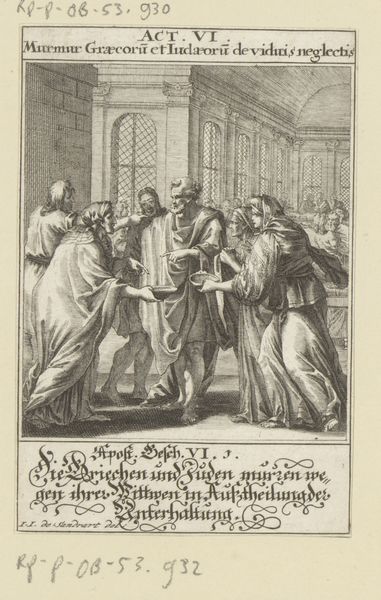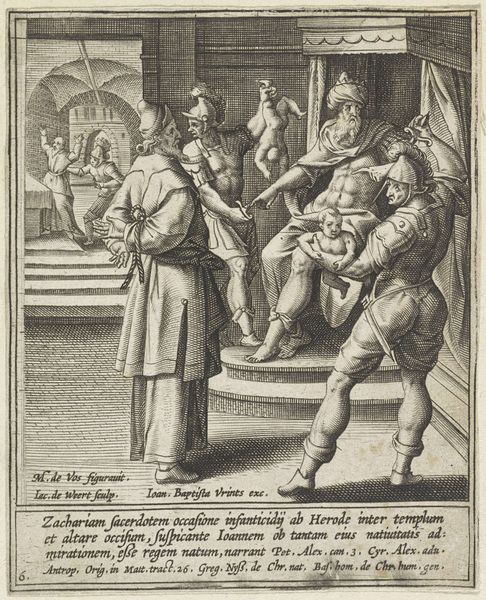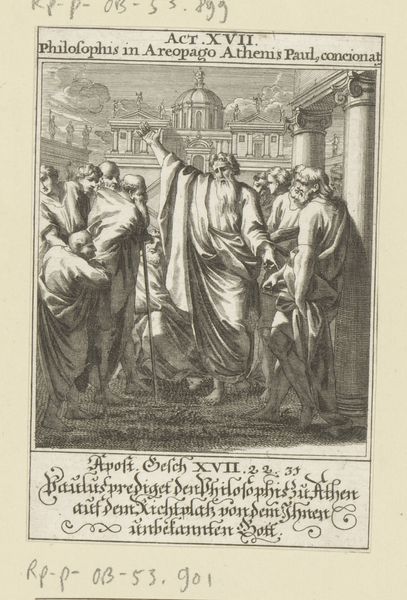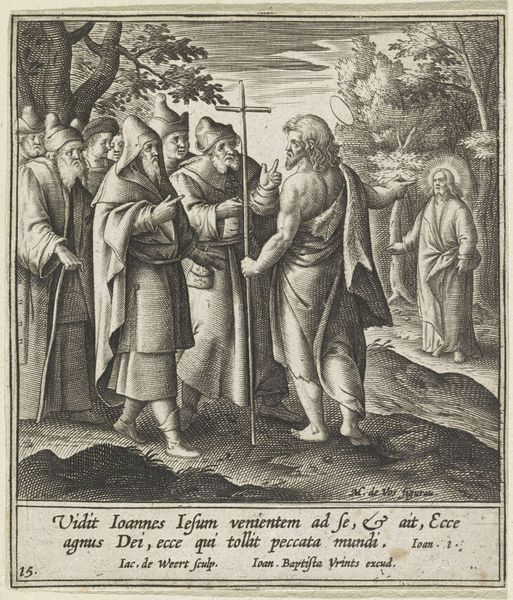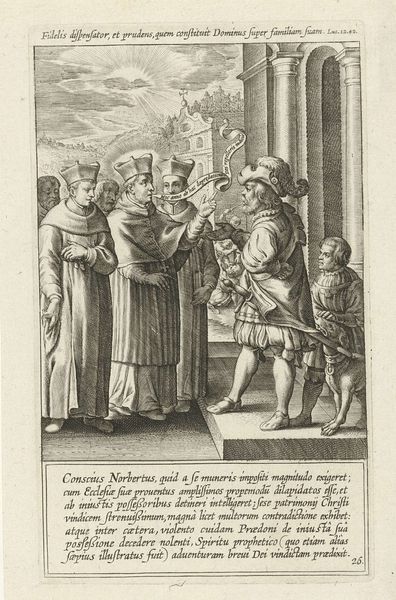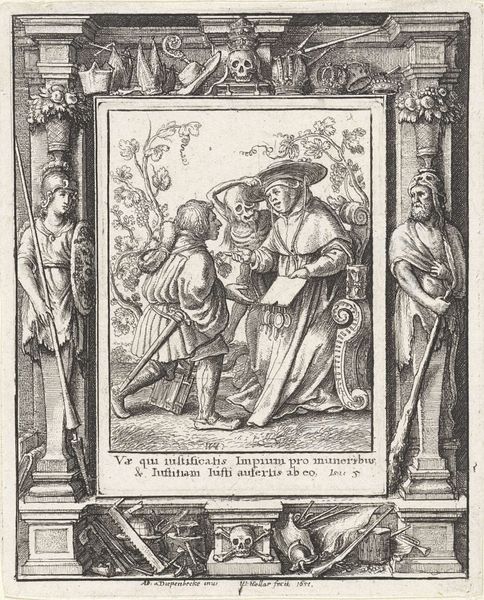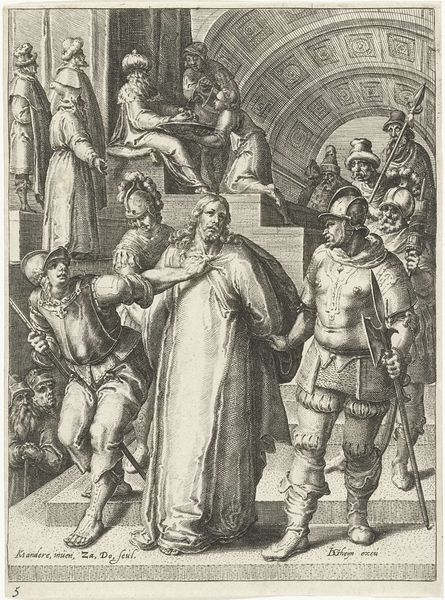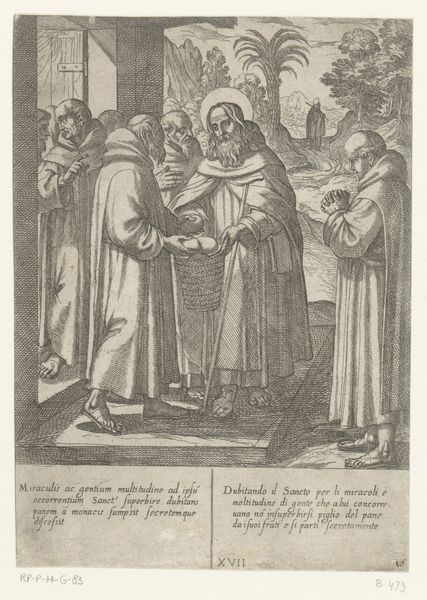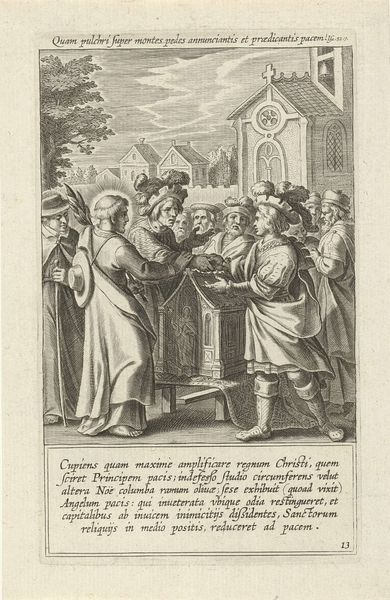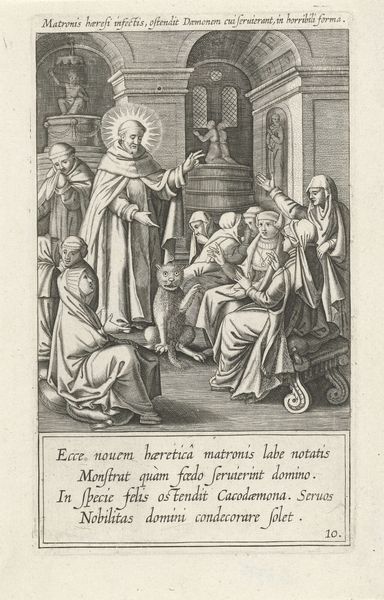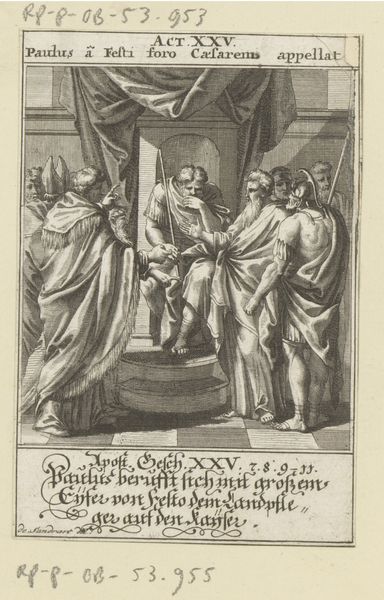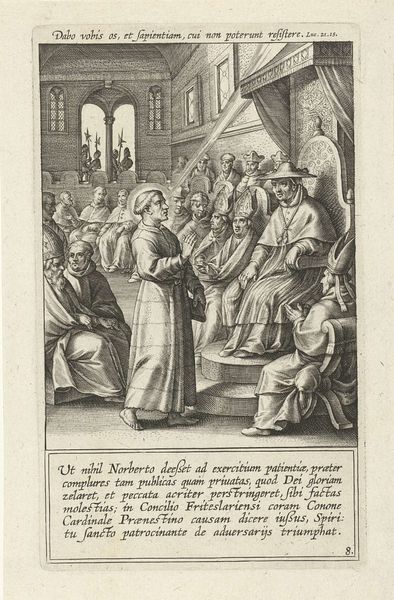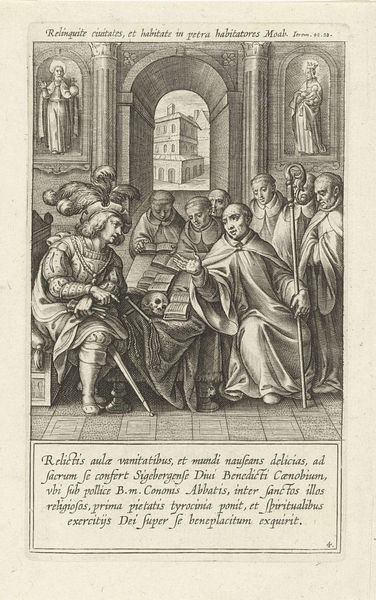
print, engraving
#
narrative-art
# print
#
old engraving style
#
figuration
#
history-painting
#
northern-renaissance
#
engraving
Dimensions: height 107 mm, width 88 mm
Copyright: Rijks Museum: Open Domain
Curator: This print, dating roughly from 1580 to 1600, is titled "Ondervraging van Johannes de Doper," or "The Interrogation of John the Baptist." It comes to us from the hand of Jacob de Weert. Editor: The somber atmosphere strikes me immediately. The sharp contrast between light and shadow creates a dramatic intensity, almost trapping John the Baptist in this pivotal moment. Curator: Absolutely. This is characteristic of Northern Renaissance engravings, favoring detailed figuration and historical narratives. Note the architecture of the figures themselves, their postures and expressions frozen mid-narrative. Editor: The iconographic density here is palpable. John's staff, topped with a cross, identifies him immediately. But look at the clothing and postures of the interrogators—they denote status, questioning, doubt, and a sort of uneasy defensiveness all at once. What do you see? Curator: Indeed. These men represent the established religious authority. They're positioned so closely to John, invading his personal space as a way of trying to destabilize him and reclaim control of the religious landscape. Editor: Control is the core issue, isn't it? John is challenging the established symbolic order. He is rendered slightly averted to his accusers. Look at their hand gestures: almost theatrical with a slight unease; compare this with his apparent steadiness! It adds layers to their portrayal as figures caught between power and anxiety. Curator: Precisely, engravings such as these served a didactic purpose. They were affordable and could circulate widely, informing and reinforcing the public's understanding of biblical events, but also perhaps subtly critiquing existing hierarchies. The scale of the piece too: not overwhelming, making it intimate. Editor: Intimate, but loaded with visual symbols that speak volumes about power, belief, and the looming presence of dissent. I appreciate that Weert used light, not as a strictly illustrative method, but as another symbolic element of great tension. Curator: Considering its production during a time of religious reformation, its narrative holds even greater significance. It reveals art's crucial public role and the potency of imagery when it’s interwoven with socio-political undercurrents. Editor: Seeing how carefully visual languages from the past speak to themes of authority, conviction, and challenge remains truly illuminating, all thanks to art like this.
Comments
No comments
Be the first to comment and join the conversation on the ultimate creative platform.
